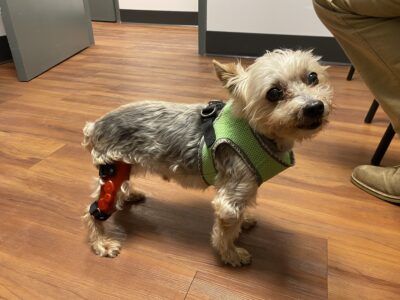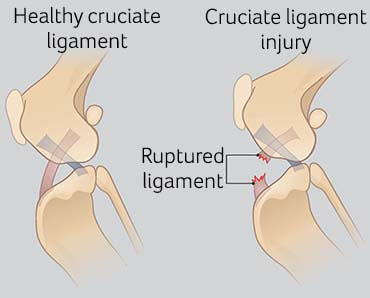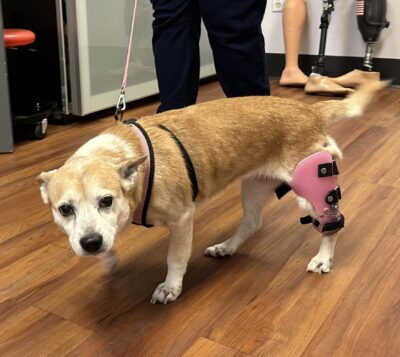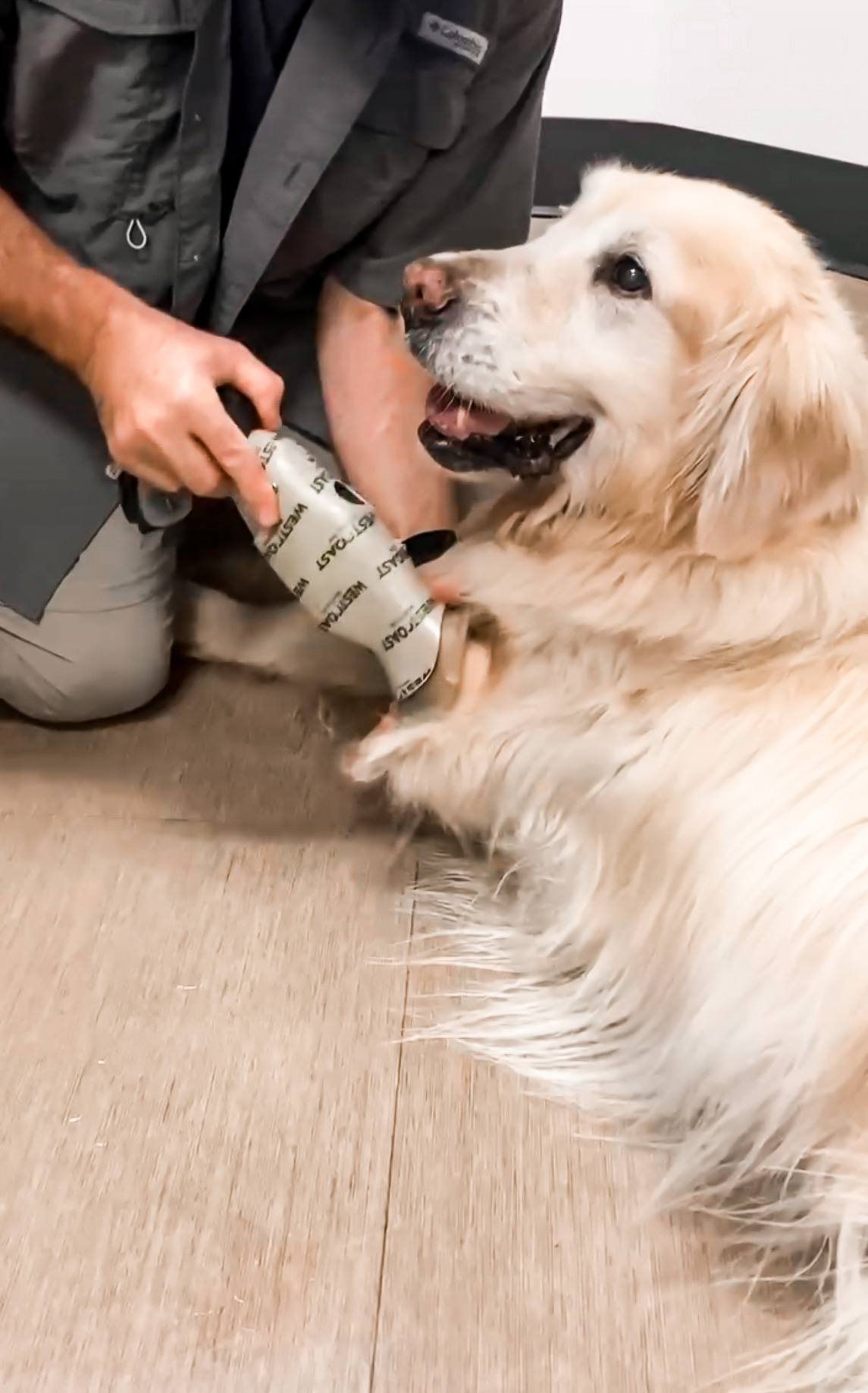Pet Braces
Your pet is one of a kind, and their treatment should be too! Our pet braces are custom-made specifically for your pet.

Were you told that your dog needs a pet brace? Did you know that just like humans, dogs can also have knee injuries? In fact, ligament damage in the knee is the second most common orthopedic condition found in dogs after hip dysplasia, and is the most frequently operated orthopedic condition in our canines.
But what happens when surgery is not an option for our furry friends?
Here at WCBL, we offer custom pet braces from the smallest pup to the largest, to support the knee externally. If you think your dog might be a candidate, or if you have any questions, contact us today. Or better yet, schedule a free consultation, we’d love to see how we can help your fur baby.



5 signs that your dog has a knee injury and may need a pet brace:
- Lameness – This can come on without warning when the weakened ligament gives way as the dog is running or playing and become uncomfortable that they will not put the foot down at all. Also, be on the lookout for gradual worsening, over weeks or months. They might seem to get better with rest, but then become lame again as they become more active.
- Sitting abnormally – They may sit or lie with their leg sticking out to the side rather than tucked in like normal, as it hurts to bend the knee.
- Stiffness in both back legs – If both knees are affected, the dog may seem to be “stiff” in the hind end or be reluctant to go for their normal walks or get up at all.
- Knee Swelling – Injuries cause inflammation and swelling in the knee and over time scar tissue develops. This makes the injured side look bigger than the normal knee.
- Clicking – Sometimes an injured ligament creates an audible “click” in the knee that can be heard when going on a walk. It’s quite uncomfortable so there is typically a significant lameness as well as the clicking.
While surgery can be a great option for many dogs, it is no longer the only option.
Typically within a few months of wearing their knee brace, dogs can return to a normal lifestyle
Big shout out to crew Westcoast Brace & Limb for getting my dude mobile again after his injury! Max is doing great with his brace and enjoying the ritual walks once more. Max loves visiting the ladies at the St. Pete location and we tell everyone we meet how great of an alternative to surgery this has been.
To ensure every fur baby can receive the care they need, we make every effort to keep our pricing affordable.
Our pet braces start at $850. For specific pricing on custom devices, please contact us directly.
Get In Touch
Complete our online form and a team member will contact you shortly.


